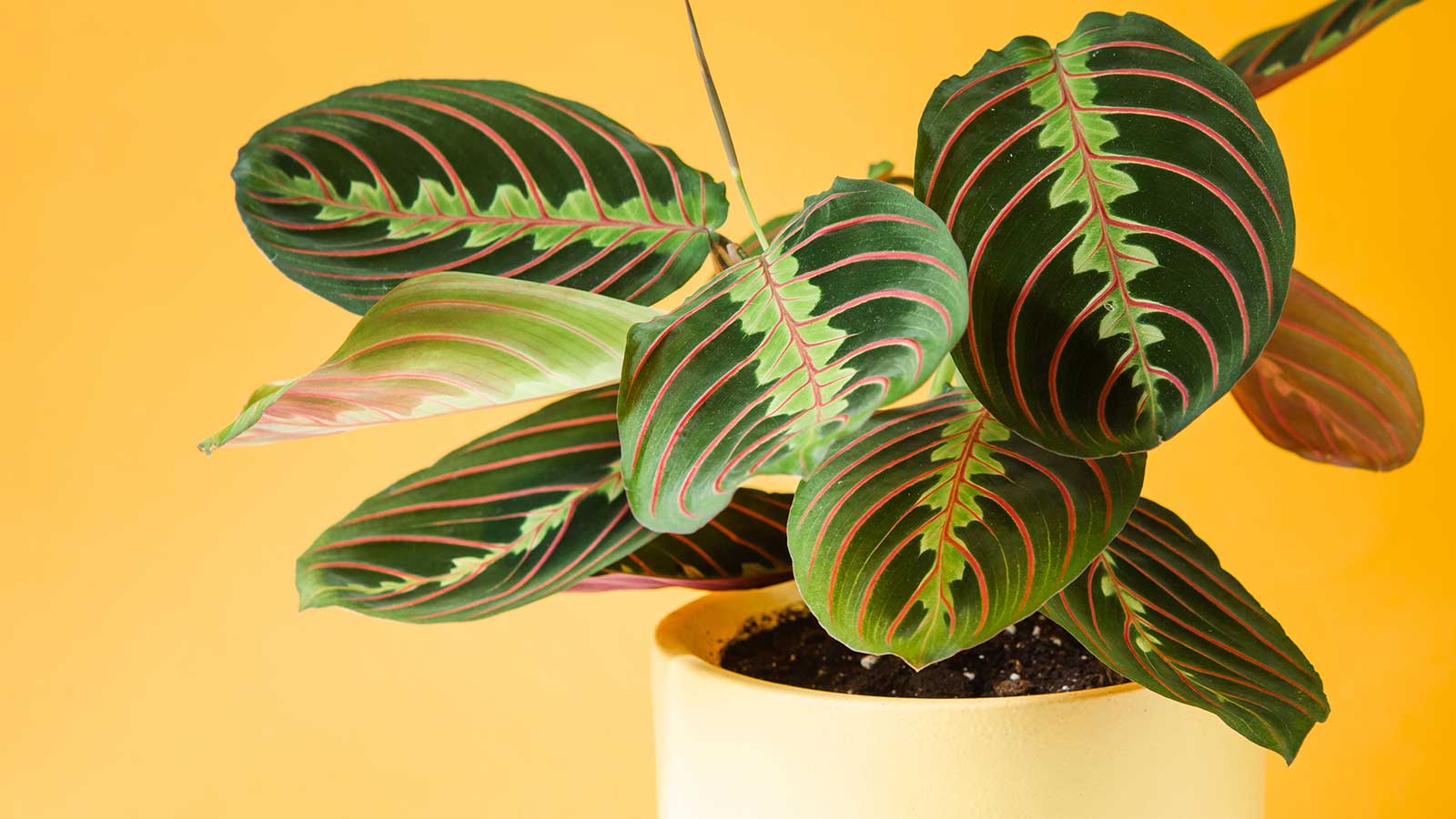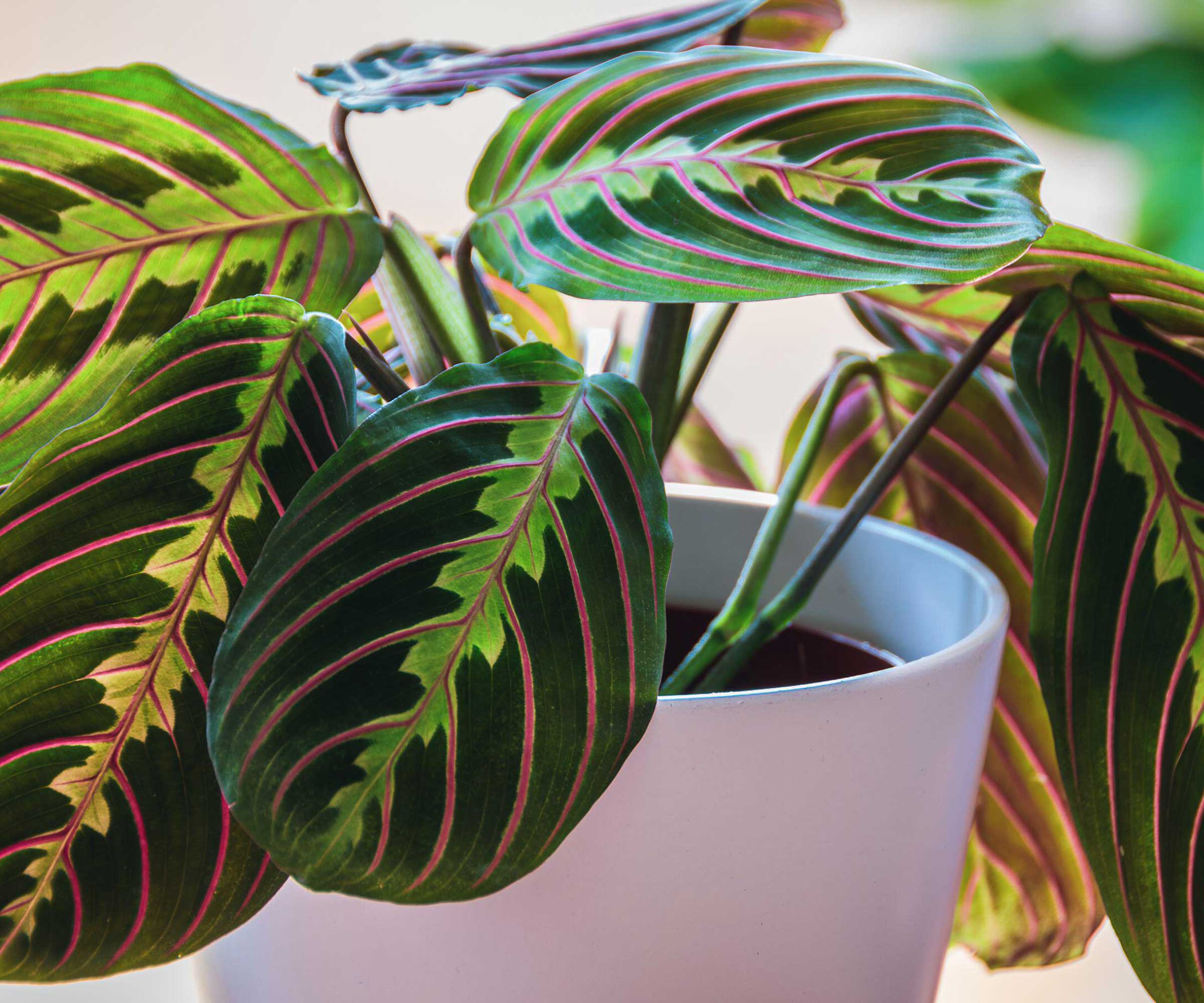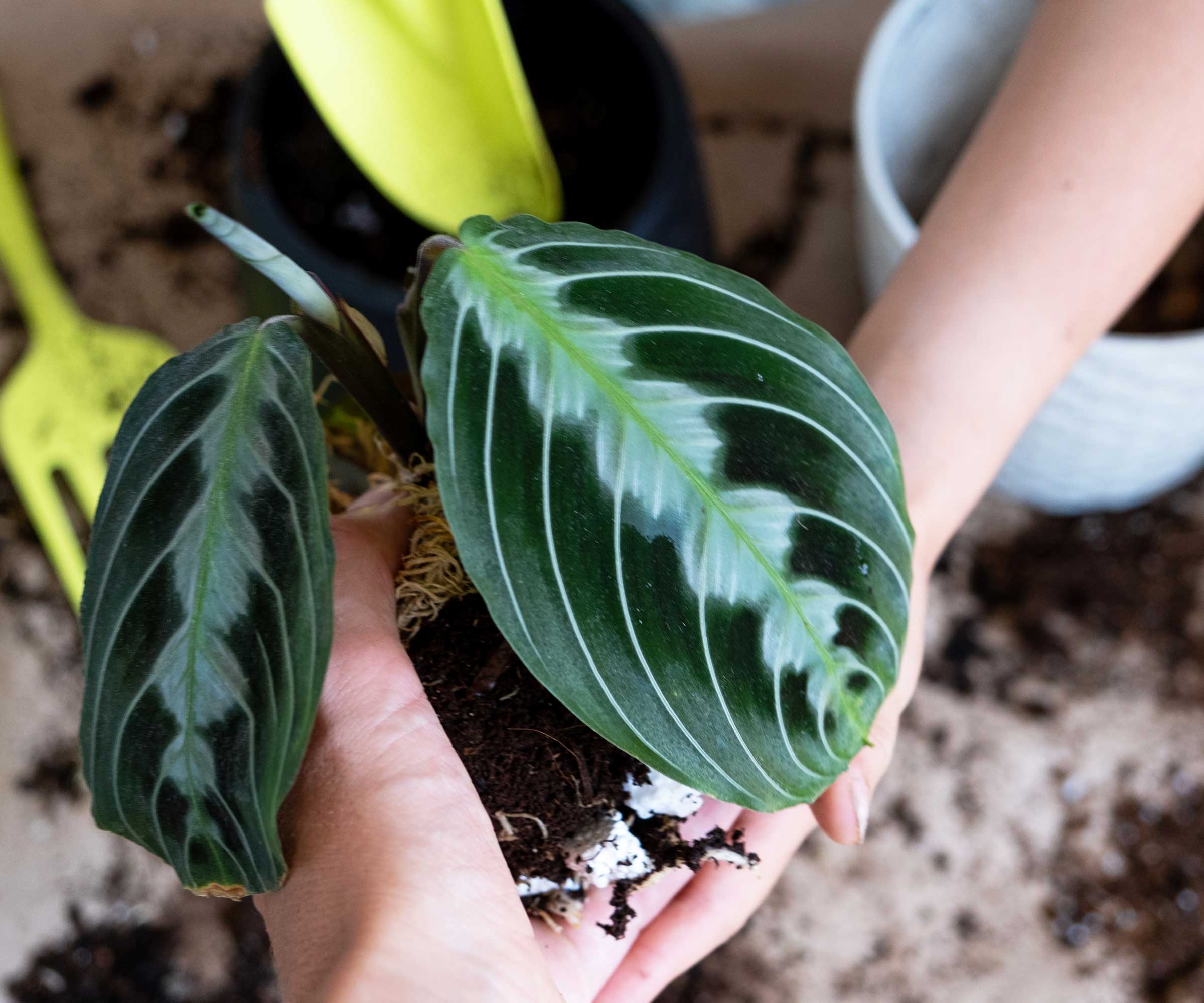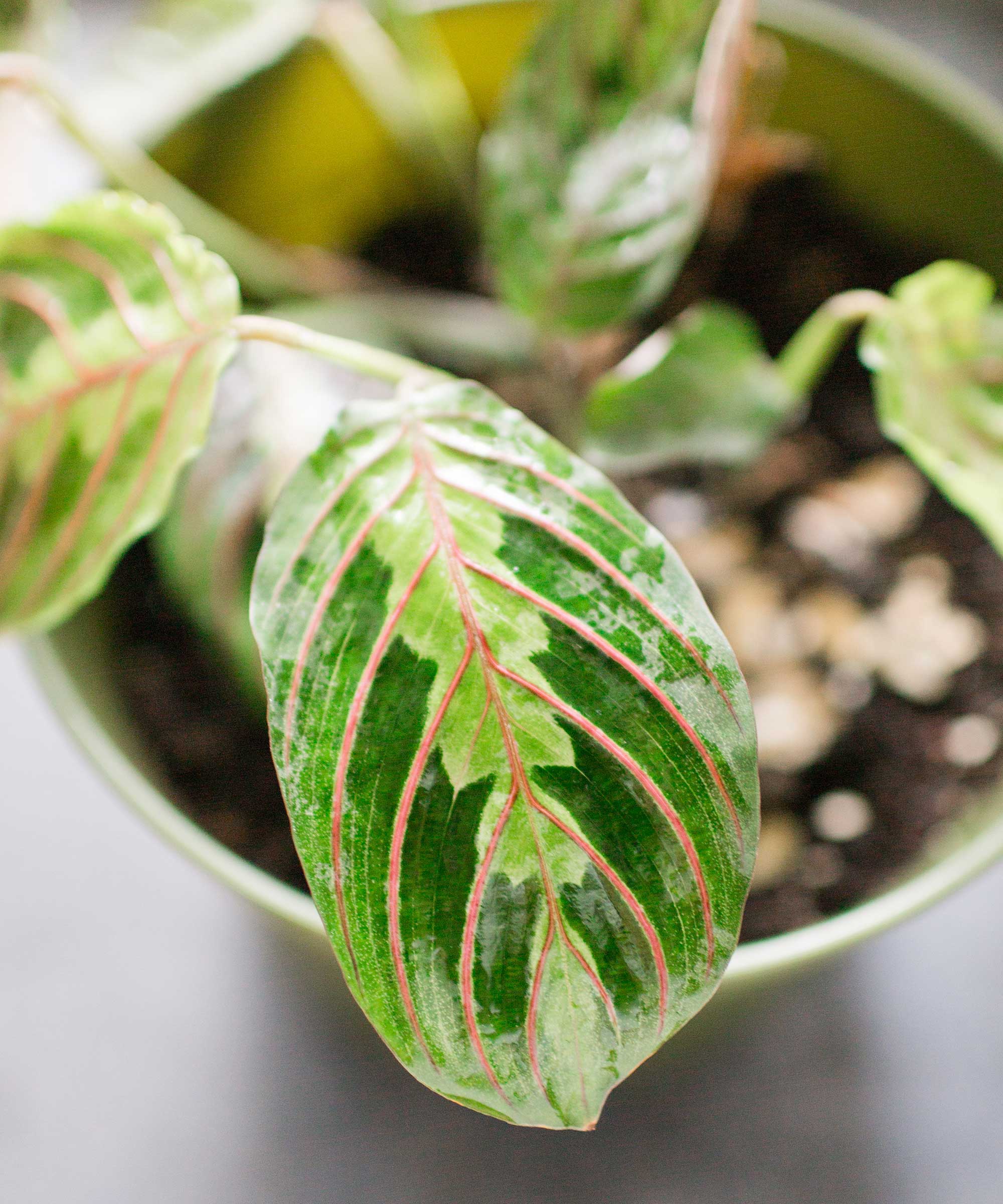
Maranta leuconeura, or prayer plants, are well-loved for their stripy leaves. These fold up at night, similarly to hands in prayer – hence the common name. They make an interesting and easy-to-care-for addition to any interior scheme, and are simple to propagate, too.
Prayer plants are usually propagated by division, which is one of the quickest ways to make more indoor plants for free. So, if you've never tried propagating your plants before, prayer plants are a good one to start with. But, there are a few key factors to bear in mind to increase the chances of success.

How to propagate a prayer plant in 5 steps
Dividing up plants is often the preferred method for propagating spider plants, too. It is simply the process of breaking an established plant into rooted portions, then replanting these separately.
Follow these steps below from gardening expert Tony O'Neill to propagate your prayer plant at home.
- Gently remove the mother plant from its pot and shake off the excess soil from the roots.
- Identify the clusters of stems with their own root systems. These are the sections you will divide.
- With a clean, sharp knife or garden shears, carefully separate the plant at the roots, ensuring each division has several healthy stems.
- Repot each division in a pot with fresh potting mix.
- Water the newly potted divisions and place them in a warm location with indirect sunlight.

Once replanted, ensure you care for your new prayer plant divisions properly to keep them healthy.
A prayer plant is happy in good light but not bright sunshine, and it enjoys a temperature of no less than 59°F, says John Negus, a gardening expert. 'Keep the compost damp but not soggy, but reduce watering when it is growing less actively in winter.'
Misting the leaves regularly with lime-free water can also be beneficial, as it will simulate its tropical habitat of Brazil, John adds. We love this colorful plant mister from Terrain.
You can also liquid-feed it weekly during the growing season, John says, using a high-potash tomato fertilizer. Burpee's organic tomato and vegetable granular plant food, available from Amazon, is well-rated.
When to propagate a prayer plant
As when propagating many other houseplants, prayer plants should be divided during the spring, at the start of their growing season.

FAQs
Can you propagate a prayer plant by taking cuttings?
It is possible to propagate prayer plants by taking cuttings in spring, although it is slightly trickier than dividing the plants.
Using a pair of sharp and clean pruners, remove a healthy stem from the plant, cutting below a leaf node. The cutting can then be planted into potting soil.
'Cover the pot with a transparent bag to increase humidity, and poke a couple of holes to allow air circulation,' recommends houseplant expert Vladan Nikolic. 'Place the pot in a location with plenty of bright, indirect light, but avoid direct sunlight to prevent leaf scorching,' he adds. Keep the soil moist. 'After a couple of weeks, your maranta should develop roots. At that point, you can remove the plastic bag.'
Prayer plant cuttings can also be propagated in water. 'Make sure that only the stem is submerged; the leaves shouldn’t touch the water’s surface,' says Vladan. Remember to change the water regularly.
Once you see how easy it is to propagate a prayer plant, you may want to branch out and try propagating your other houseplants, too, such as a monstera or fiddle leaf fig. It's a great way to make a saving and can be incredibly rewarding – just remember to stay clear of the common houseplant propagation mistakes.







